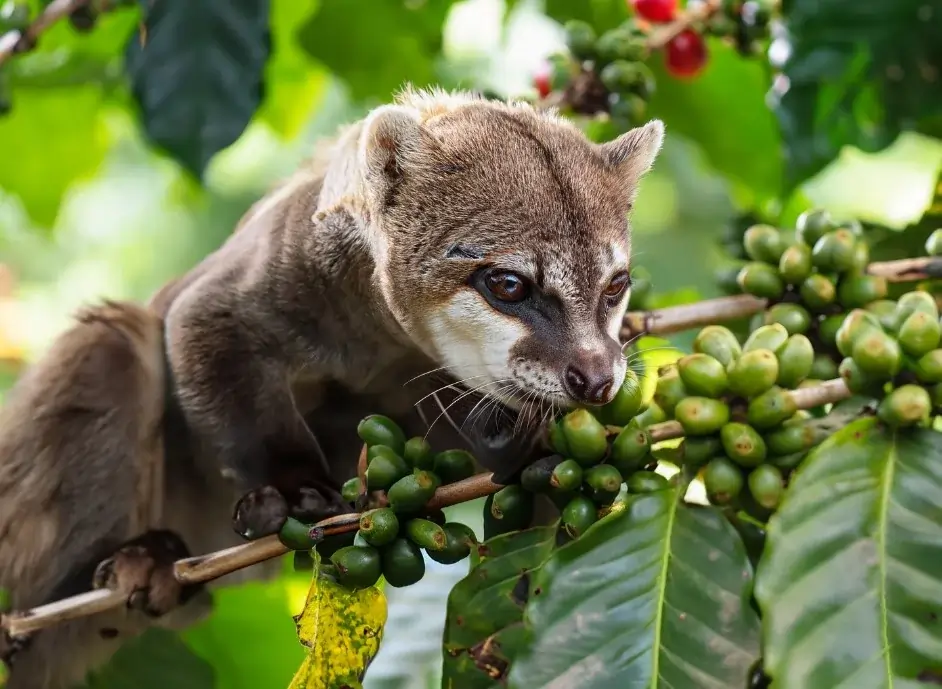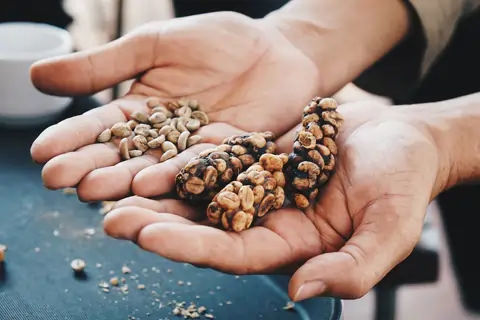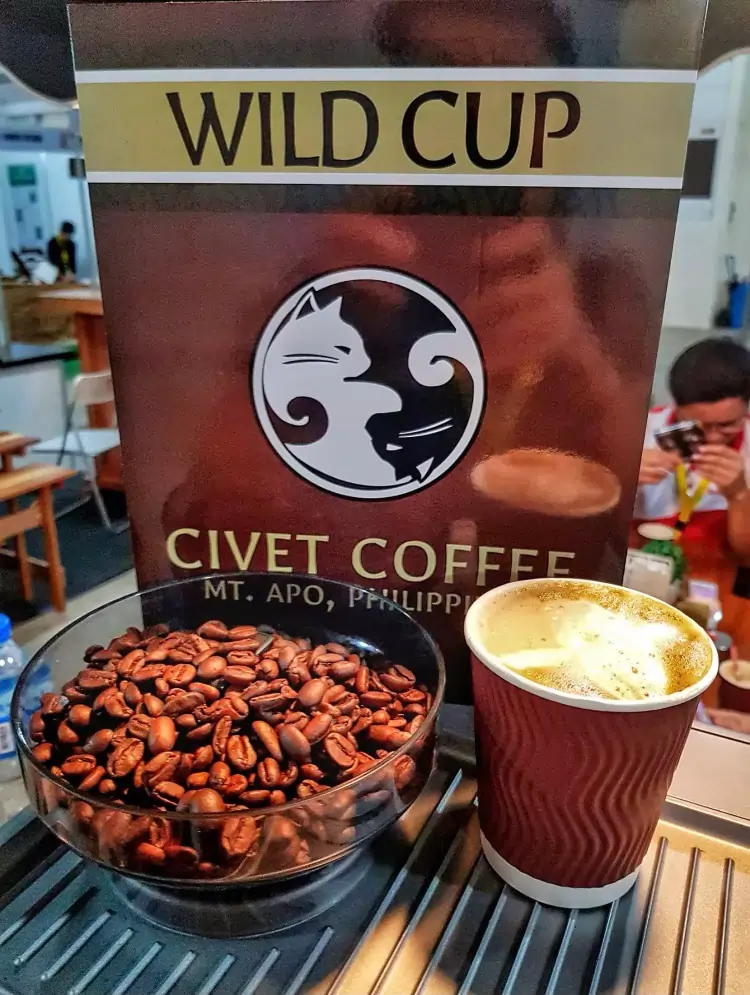Civet Philippines, Unveiling the Word of Musang and Kopi luwak
In the Philippines, civet cats, specifically the Philippine civet (locally known as the Musang), play a significant role in local biodiversity and cultural heritage. These small, nocturnal mammals are recognized for their distinctive appearance and their ecological contributions, such as seed dispersal and pest control. The demand for civet cats in the Philippines, particularly in the context of producing kopi luwak (civet coffee), is notably concentrated in certain provinces where coffee farming is prevalent.

Table of Contents
Provinces and Regions Involved Where Civet Cats and Civet Coffee Production
1. Batangas known as coffee production and has a history of coffee cultivation and is known for its local varieties, including robusta and arabica.
2. Cavite its similar to Batangas, Cavite is another important coffee-growing region. The province’s favorable climate for coffee cultivation supports the production of various coffee types, including kopi luwak.
3. Quezon was a agricultural area is known for its agricultural activities, including coffee farming. The region’s coffee farms sometimes include civet coffee production, contributing to the local economy and adding value to their coffee products.
4. Sorsogon the emerging producer recent years, Sorsogon in the Bicol region has been developing its coffee industry, including the production of kopi luwak. The province’s coffee growers have been exploring civet coffee as a niche market to enhance their economic opportunities.
5. Mindanao (Various Provinces) was a diverse coffee region in Mindanao, several provinces are involved in coffee production, such as Bukidnon, Davao, and North Cotabato. These areas are known for their favorable growing conditions and have been exploring various specialty coffee markets, including kopi luwak.

Civet coffee has several types based on various factors including the specific civet species, the coffee bean varieties used, and regional practices
- Kopi Luwak (Traditional)
- The classic form of civet coffee made from beans consumed and excreted by civet cats.
- The beans undergo fermentation in the civet’s digestive tract, imparting a distinctive smoothness and reduced acidity.
- Kopi Luwak Arabica
Bean Type:
- Made from Arabica beans, which are known for their superior flavor profile compared to other coffee beans.
Flavor Profile:
- Generally produces a more nuanced and complex coffee with a smoother, richer taste.
- Kopi Luwak Robusta
Bean Type:
- Made from Robusta beans, which have a stronger, more bitter flavor and higher caffeine content.
Flavor Profile:
- Results in a more robust and earthy coffee compared to the Arabica version.
- Single-Origin Kopi Luwak
- Coffee sourced from a specific region or plantation, highlighting the unique characteristics of the local coffee beans and the regional influence on the flavor profile.
- Organic Kopi Luwak
- Made from beans that are grown without the use of synthetic pesticides or fertilizers. This type emphasizes environmentally friendly farming practices.
Flavor Profile:
- May have a cleaner taste and appeal to consumers who prioritize organic and sustainable products.
Civets in the Philippines Focusing on their Role in Coffee Production, Ecological Significance, and other Relevant Aspects
- The Role in Coffee Production
- Coffee is produced using beans that have passed through the digestive system of civet cats.
- The process imparts a distinctive flavor to the coffee, which is highly prized by connoisseurs around the world.
- Civet coffee, produced from coffee beans partially digested by civets, is highly prized for its unique flavor. This industry can generate income for local communities.
- The Process of Collecting Civet Coffee
Civet Consumption:
- Wild Civets: In more commercialized settings, civets are often kept in captivity and fed a diet of coffee cherries.
- Captive Civets: In the traditional method, civets in the wild consume ripe coffee cherries from coffee plants.
Digestion and Excretion:
- The coffee cherries pass through the civet’s digestive system. The enzymes in their stomach break down the coffee bean’s protein structure, altering its flavor profile.
Collection:
- Civet droppings are carefully collected from the wild or from enclosures. This is often done by hand, which can be a labor-intensive process.
- The droppings are then sorted to separate the coffee beans from other waste materials.
Cleaning and Processing:
- The coffee beans are meticulously cleaned to remove any traces of feces.
- The beans are washed and dried to remove moisture.
- Sanitization procedures may be applied to ensure that the beans are free from any harmful bacteria or pathogens.
Drying:
- After washing, the beans are dried. This can be done by spreading them out in the sun or using mechanical dryers. Proper drying is essential to reduce moisture content and prepare the beans for roasting.
Roasting and Grinding:
- The cleaned coffee beans are roasted to develop the desired flavor profile.
- The roasted beans are then ground into coffee powder ready for brewing.
Packaging and Quality Control:
- The roasted beans are inspected for quality, and any defective or inconsistent beans are removed. Quality control ensures that the final product meets the standards expected of premium coffee.
- The beans are packaged to preserve freshness and flavor. Proper packaging is essential to maintain the quality of the coffee until it reaches consumers.
Distribution and Sale:
- The final product is then marketed and distributed.
- This includes selling to specialty coffee shops, cafes, and international markets.
- The high value, kopi luwak often involves premium branding and targeted marketing.
- Ecological Significance
Seed Dispersal:
- Civet cats contribute to the ecosystem by dispersing seeds through their droppings.
- They consume various fruits, the seeds pass through their digestive system and are deposited elsewhere, aiding in forest regeneration and maintaining biodiversity.
Pest Control:
- Civets are omnivorous and help control populations of insects and small rodents.
- This natural pest control can benefit agriculture by reducing the need for chemical pesticides.
- Cultural
Cultural Importance:
- Civets is important in cultural, especially in their coffee production, are part of local traditions and cultural heritage.
- These can be unique process of making kopi luwak has become a point of pride for communities involved in its production.
Tourism:
- In tourism the uniqueness of civet coffee attracts tourists and coffee enthusiasts who are interested in the production process.
- This can be also, boost eco-tourism and contribute to local economies.
- Conservation and Ethical Considerations
- Humane Treatment:
There are significant ethical concerns regarding the treatment of civet cats in the coffee industry. Some practices, such as keeping civets in captivity under poor conditions for coffee production, have been criticized. Efforts are underway to promote humane and ethical treatment, including free-range or ethically farmed civets.
- Sustainability:
Sustainable practices are important to ensure the long-term viability of civet coffee production. This includes maintaining natural habitats and supporting environmentally friendly farming practices.
F. Economic Impact
- High Market Value:
Civet coffee is one of the most expensive coffees globally, with prices reaching hundreds of dollars per pound.
- Job Creation:
The civet coffee industry creates employment opportunities in various sectors, including farming, processing, and marketing.
- Small Business Support:
Local coffee farms and specialty cafes benefit from the production and sale of civet coffee, enhancing their market presence and profitability.
Marketing Summary for Civet Coffee in the Philippines
A. Target Market:
- Luxury Coffee Enthusiasts:
Focus on high-end coffee lovers who appreciate unique and exclusive products.
- Eco-Tourists:
Appeal to tourists interested in experiencing unique local practices and sustainable coffee production.
- Specialty Coffee Shops:
Partner with high-end cafes and gourmet stores both locally and internationally.
B. Unique Selling Points:
- Exclusive Product:
Highlight the rarity and high value of kopi luwak due to its unique production process.
- Flavor Profile:
Emphasize the smooth, rich flavor and reduced acidity resulting from the civet’s fermentation process.
- Cultural and Ethical Aspects:
Promote the traditional and ethical aspects of production, particularly if using humane practices.
C. Brand Positioning:
- Premium and Exotic:
Position kopi luwak as a luxury product that offers a unique and exclusive coffee experience.
- Sustainable and Ethical:
Highlight sustainable and humane practices if applicable, which can enhance the brand’s appeal to environmentally conscious consumers.
D. Marketing Strategies:
- Storytelling:
Share the story behind kopi luwak, including the traditional methods of production and the unique role of civet cats.
- Partnerships:
Collaborate with upscale coffee shops, restaurants, and boutique retailers to increase visibility and credibility.
- Digital Marketing:
Utilize social media, blogs, and websites to reach a global audience. Leverage high-quality images and videos of the coffee and its production process.
E. Promotional Activities:
- Tastings and Events:
Host tasting events and workshops to educate consumers and create direct engagement with the product.
- Limited Editions:
Offer limited edition or special packaging to enhance the exclusivity and appeal of the product.
- Local Distribution:
Establish relationships with local high-end cafes, hotels, and gourmet food stores.
- International Markets:
Explore export opportunities to markets where luxury and specialty coffees are in demand.
- Challenges:
- Ethical Concerns:
Address and mitigate concerns about animal welfare to maintain a positive brand image.
- Job Creation:
The civet coffee industry creates employment opportunities in various sectors, including farming, processing, and marketing.
- Small Business Support:
Local coffee farms and specialty cafes benefit from the production and sale of civet coffee, enhancing their market presence and profitability.
Cultural Significance
- Cultural Heritage:
Civet cats are embedded in local folklore and traditions. Their role in coffee production has become a point of pride and cultural identity for many communities.
- Educational and Touristic Interest:
The process of making civet coffee attracts tourists and coffee enthusiasts, providing educational experiences about local practices and conservation efforts.
Conservation and Ethical Considerations
- Sustainable Practices:
The civet coffee industry has led to increased awareness about the ethical treatment of civet cats.
- Environmental Impact:
The production of civet coffee often promotes sustainable farming practices, contributing to the preservation of natural habitats and reducing environmental impact.
Challenges and Opportunities
- Market Fluctuations:
The luxury nature of civet coffee can lead to market volatility. Diversifying products and markets can help mitigate financial risks.
- Ethical Concerns:
Ensuring the ethical treatment of civets remains a crucial aspect of the industry. Adopting and promoting humane practices is essential for maintaining the industry’s reputation and sustainability.
If you like this post, you may also want to explore https://news.sky.com/
You may also want to read:



